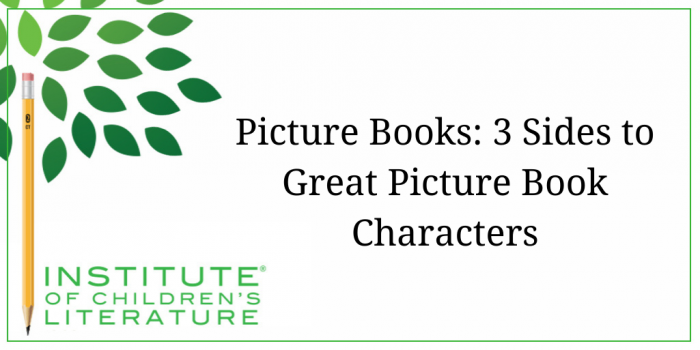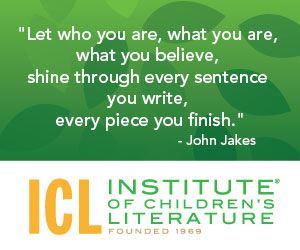1000 N. West Street #1200, Wilmington, DE 19801
© 2024 Direct Learning Systems, Inc. All rights reserved.

We teach our students how to write and get published!
View our Course Catalog >
Picture book characters have very few words in which to capture the heart of the reader and become memorable. The reality is that though editors and agents like finding strong plots in a picture book, they love finding unique, memorable characters. This is a character driven art form.
Keep in mind that successful picture books are read over and over. Partly this is because the child enjoys the sound of the book, and the action or humor, but a large part of the success of a picture book lies in a truly memorable, special character. So what traits can help make us love and remember your character?
One of the most common phrases used to describe picture book characters is “larger than life.” A stubborn character will be completely unreasonable. A shy character will be unusually timid. A worrier will make himself sick with worry. Often a main character will have a special defining trait and that will be the trait that makes the character “larger than life” because it is pushed to the edge.

“Sure, I worry, but not nearly as much as Wemberly in Wemberly Worried.”
“I might be shy, but not nearly as much as Charles in Shy Charles.”
And, of course, even though the characters have these extreme traits, they are still successful in the story, which is comforting.
It’s hard to like and relate to someone who is perfect. It’s also hard to like someone who is obnoxious. But sometimes, a character might be very strong (or even boorish) in some ways, but clearly vulnerable in others. Consider Max from Where the Wild Things Are. He makes mischief that clearly pushes his mom to the edge, but he is still sent to his room. He isn’t all powerful.
Or consider Sheila Rae the Brave. At first her character is presented as nearly super-humanly brave, but we quickly find out that Sheila Rae’s bravery definitely has limits, and she’s as vulnerable to being scared when she’s lost as any other child.
Picture book characters need to get things done. Now sometimes the character would rather not. The shy character may be forced into going to school. The worried character may have to go to the doctor, even if she’d rather not. The couch potato may have to face the horror of chores.
So the activity might be forced on the character, but the character shouldn’t be passive about it. If you’re scared and you have to go to the doctor, maybe you come up with some schemes to put it off. “I’m too sick to go to the doctor. I think I heard on the TV that the doctor’s office was carried away by a tornado. Don’t you think you’re too busy to take me today?” Whatever situation the character faces, it should provoke action for the story to be engaging and exciting.
So as you write your picture books, push your characters to the edge, keep them active, and be sure they bring enough vulnerability to make us care. Hit all three marks, and you’re well on your way to picture book success.
With over 100 books in publication, Jan Fields writes both chapter books for children and mystery novels for adults. She’s also known for a variety of experiences teaching writing, from one session SCBWI events to lengthier Highlights Foundation workshops to these blog posts for the Institute of Children’s Literature. As a former ICL instructor, Jan enjoys equipping writers for success in whatever way she can.
1000 N. West Street #1200, Wilmington, DE 19801
© 2024 Direct Learning Systems, Inc. All rights reserved.
1000 N. West Street #1200, Wilmington, DE 19801
© 2024 Direct Learning Systems, Inc. All rights reserved.
1000 N. West Street #1200, Wilmington, DE 19801
© 2024 Direct Learning Systems, Inc. All rights reserved.
1000 N. West Street #1200, Wilmington, DE 19801
© 2025 Direct Learning Systems, Inc. All rights reserved.
1000 N. West Street #1200, Wilmington, DE 19801
©2025 Direct Learning Systems, Inc. All rights reserved. Privacy Policy.
2 Comments